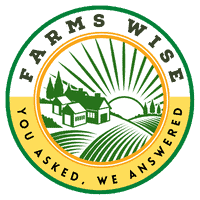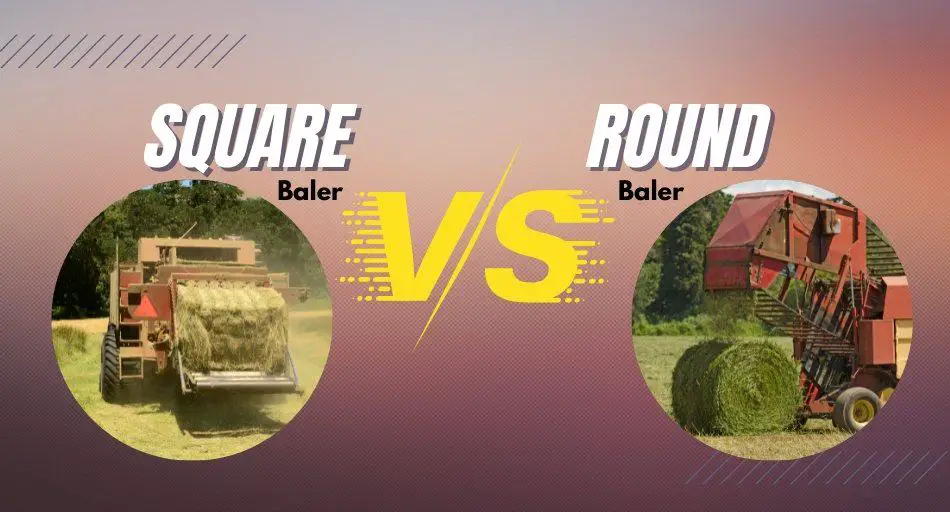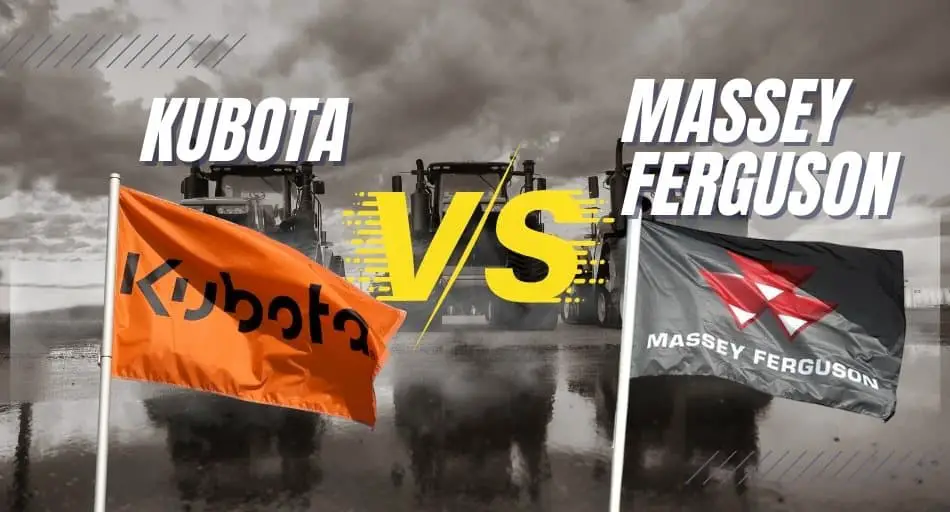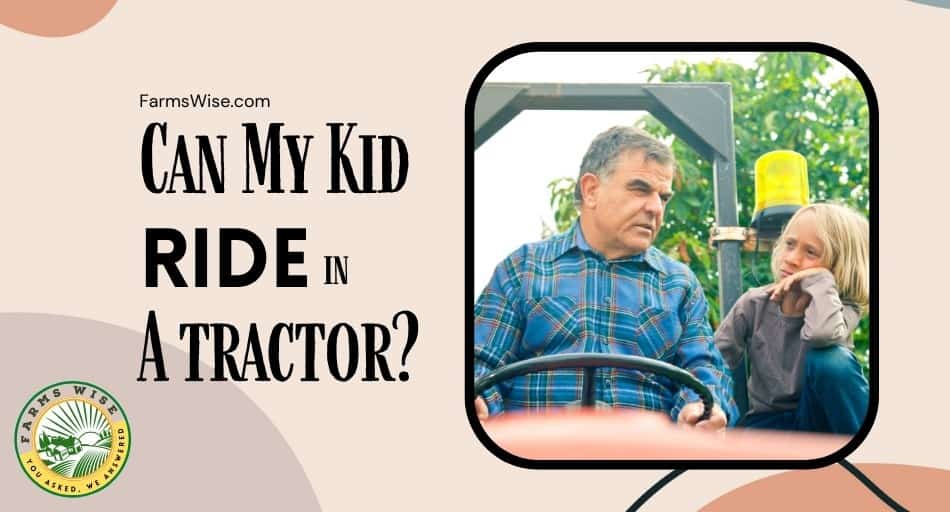We all know the old adage about square pegs and round holes not mixing well, but what about square balers and round balers?
Are they really so different, and is one baler better than the other? Let’s take a hayride around the Square Vs Round baler battle.
What is the difference between square and round balers?
Square balers are designed to produce small square bales of hay and round balers deliver those gigantic round bales you see dotting fields across the country. While there are different types of machinery that can function as hay mowers, the focus here is on balers that mount to your tractor’s 3-point hitch as these are the most popular amongst farmers.
Considering the efficiency of the two sorts of balers is key to deciding whether to use a square or round baler in your farming operations.
Main differences between square and round balers
| Square baler | Round baler | |
|---|---|---|
| Usage | The larger volume of smaller bales easily stacked into small barns | Much larger round bales, large-scale hay harvesting |
| Weight | 40-60 pounds | 100-1000 pounds |
| Weather factor | More moisture absorption during bad weather conditions | Better to withstand rainstorms |
| Time | Time-consuming | Efficient and faster |
| HP needed | 35 HP (3000 pounds tractor) | 35-60 HP (3000 pounds tractor) |
| Cost | $2000 (smaller square baler), much more expensive for a bigger square baler compared to the round baler | $3000 (used)-$20000 (newer model) |
| Machinery for moving | Not needed (easily maneuvered by a single person) | Needed |
| Safety | More stable when stacked | Less stable |
| Storage | Suitable for stacking and less storage space | Not suitable for stacking and larger storage volume needed |
| Waste | Less hay wasted | More hay wasted |
Difference between square baler and round baler
Livestock is the livelihood of a farm and feeding them is one of its most vital and often labor-intensive jobs. This makes your hay baler one of the most important pieces of farming machinery that you will purchase.
Deciding between a square or round baler is largely a personal preference but a smart choice will be based on considerations of farm size, manpower, storage availability, and the type of animals you’re farming.
Let’s have a closer look at their differences.
Square Baler Vs. Round Baler – usage
1. What is a square baler used for?
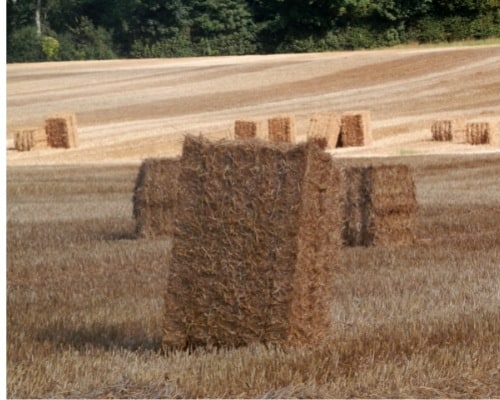
Manufactured for producing small square bales of hay, a square baler is ideal if you want a larger volume of smaller bales. Individual bale dimensions are usually around three feet long, half a foot wide, and a foot tall.
They weigh around 40 to 60 pounds. With these weights and dimensions, the bales are easily maneuvered by a single person who can carry them to livestock to be fed.
Small bales should fit through any door, are easily stacked into small barns, and result in very little waste as the hay is generally all consumed rather than being trampled on or purposed as bedding.
In the argument against square balers, they can be more time-consuming both in the production and distribution of hay.
2. What is a round baler used for?
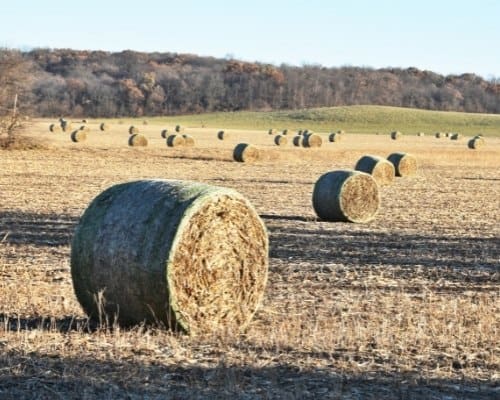
A round baler is designed to produce much larger round bales of hay that can weigh hundreds or even thousands of pounds. Due to their enormous size, you will be able to convert the hay from large fields into very few bales.
They are better able to withstand rainstorms than smaller bales as less of their hay will be exposed to possible spoiling. Large bales can feed livestock for days at a time when left in a pasture. The weight of round bales makes it necessary to move them with machinery.
Their shape also makes them unsuitable for stacking so they will take up more storage space. There is generally more wastage than with small bales as a percentage of hay will be soiled by trampling animals or used for their bedding.
Overall, a round baler should provide more efficient large-scale hay harvesting performance in terms of capacity, speed, and yield.
Square Baler Vs. Round Baler – HP needed
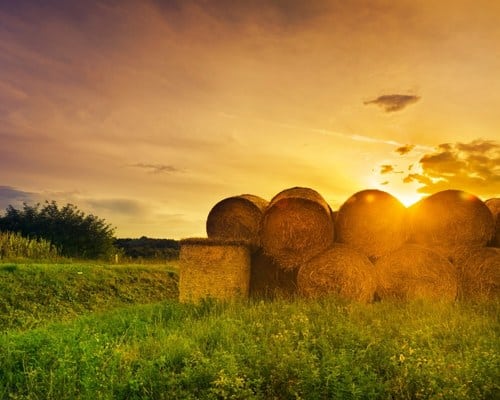
1. How much HP do I need for a square baler?
There are some mini-baler options that will fit into the back of a pickup and that run with as little as 15 HP.
Mini options may suit hobby farmers but most other farming operations will want an average-sized square baler model which may require around 35 HP.
A tractor weight with a minimum of around 3000 pounds is necessary meaning some compact models of tractors aren’t up to the job.
Discussions on bailing biomass, the energy involved in the production, movement, and storage of bales, can get pretty technical and involved and the clearest approach is to carefully examine the specs on any baler purchase to determine whether it’s compatible with the HP you have available and the jobs that need doing.
2. How much HP do I need for a round baler?
An average round baler can require 35 HP and a tractor weight of at least 3000 pounds. There are smaller models of round balers on the market that only require 16 HP and 2000 pounds of tractor weight.
For larger-scale farming operations, you may need 60 HP or perhaps even 80-100 HP. As with square balers, the variance in how much HP you will require for the operation of a round baler is significant.
Square Baler Vs. Round Baler – cost
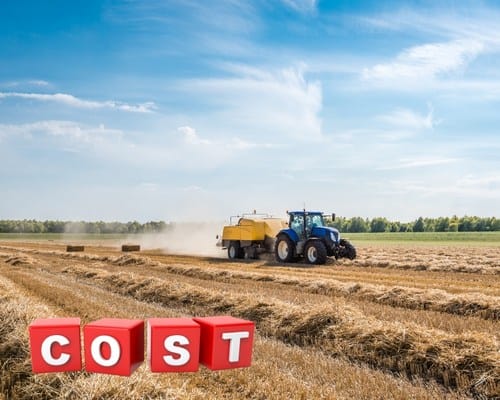
1. How much does a square baler cost?
You can find a new small square baler on a marketplace for just under $2000 and may find a cheaper second-hand deal. If you’re considering purchasing a used model it’s important to consider how serviceable it will be.
Square balers tend to be more expensive than round balers of a similar size.
2. How much does a round baler cost?
You may come across a second-hand round baler for around $3000 but you’re likely to pay a lot more for one. A newer and much larger round baler can set you back upwards of $20,000 and perhaps nearer to $100,000.
As there are many brands and variations on hay balers, you’ll need to do some scouting around online or at dealerships to find the best bang for your buck. In general, there’s more round baling equipment on the market which should see better competitive pricing.
What other equipment do I need to make hay?
You’re going to need a dependable tractor to run your baler with its size matching your choice of baler. If you’re square baling it you can get away with a smaller tractor with the specs discussed above.
If your operation is larger scale then a hardy workhorse of a tractor will be required. You’re also going to need to rake your hay into windows before it can be baled.
There are different styles of rakes with the main varieties being the wheel, parallel, rotary, and belt options.
Finally, if you want equipment to help you spread and turn over loose hay in the field, a hay tedder will do the job. They come in a range of sizes to suit different tractors and require little HP to operate.
Final word
There are no clear winners in the Square Vs Round tournament, just as many options as there are farming methods. Choose wisely to make lighter work of your haymaking.
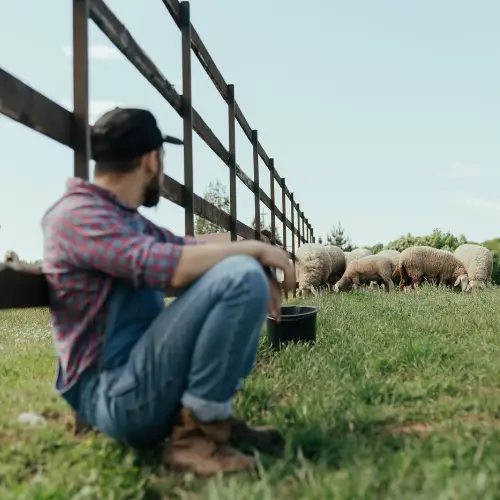
Jack is the owner, chief editor, and senior writer of this website.
Machinery, engines, and farming have always been a passion of his since he was a young boy. Growing up on a small farm in rural America, he learned the value of hard work and dedication from an early age.
After completing his degree in Engineering, he decided to follow his dream and became a farmer in 2009.
Since then, he has gained a wealth of knowledge and experience in the field. He has grown a variety of crops, tended to farm animals, and worked with all sorts of farming machinery. Continue reading…
